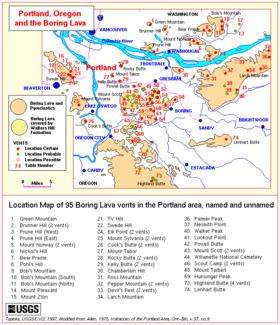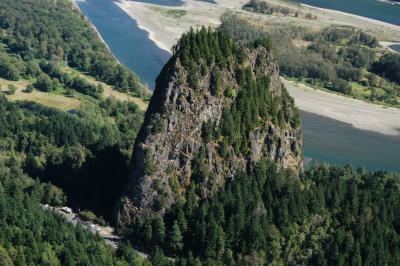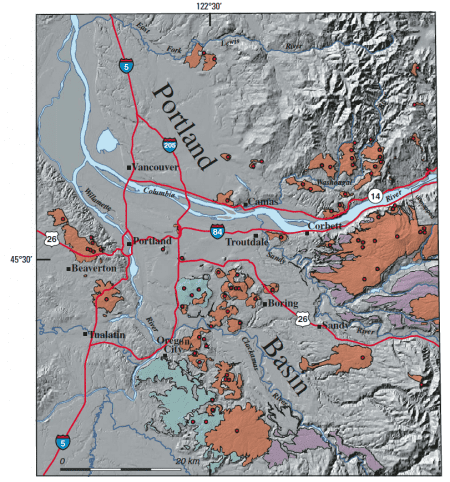Age Pleistocene Highest point Larch Mountain | Last eruption > 300,000 years ago Geology Volcanic field | |
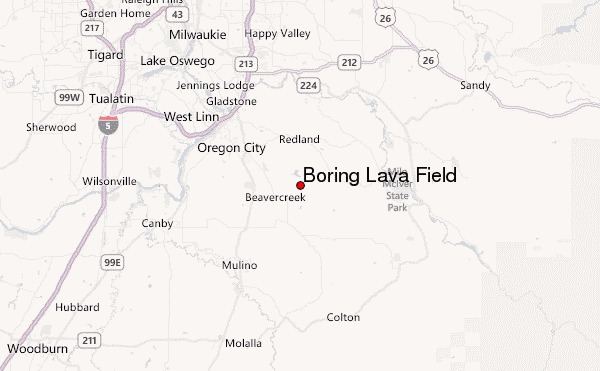 | ||
Location Oregon and Washington, U.S. Highest point
– elevation
– coordinates Larch Mountain
4,061 feet (1,238 m) Mountains Rocky Butte, Larch Mountain, Mount Sylvania, Powell Butte | ||
The Boring Lava Field is an extinct Plio-Pleistocene volcanic field zone with at least 32 cinder cones and small shield volcanoes lying within a radius of 13 miles (21 km) of Kelly Butte, which is approximately 4 miles (6 km) east of downtown Portland, Oregon, in the United States. The name is derived from the town of Boring, Oregon, which lies just to the southeast of the most dense cluster of lava vents. The zone became active at least 2.7 million years ago, and has been extinct for about 300,000 years.
Contents
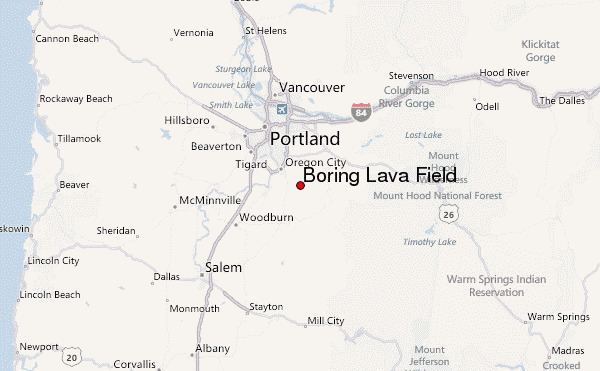
The Portland metropolitan area, including suburbs, is one of the few places in the continental United States to have extinct volcanoes within a city's limits; Bend, Oregon is another; for example Pilot Butte is a 500 foot high cinder cone located within the Bend city limits.
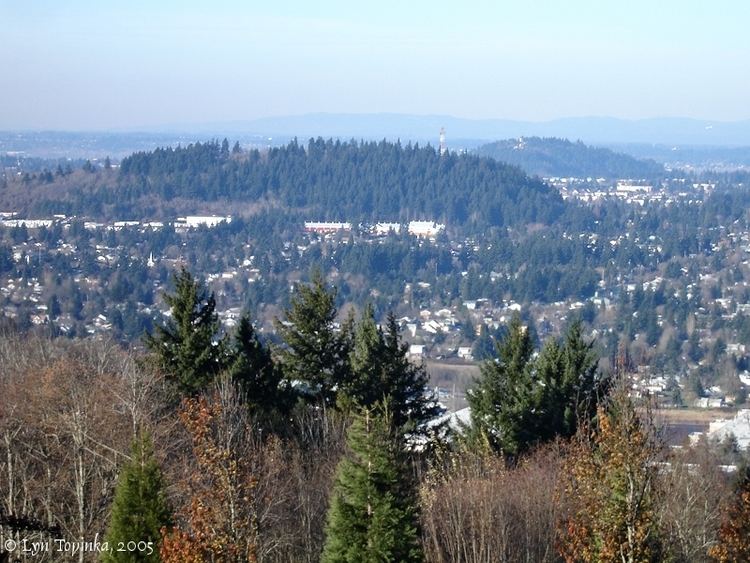
Oregon ventsEdit
The following vents are in Oregon:
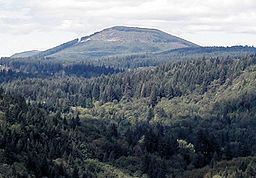
Washington ventsEdit
The following vents are in Washington:
